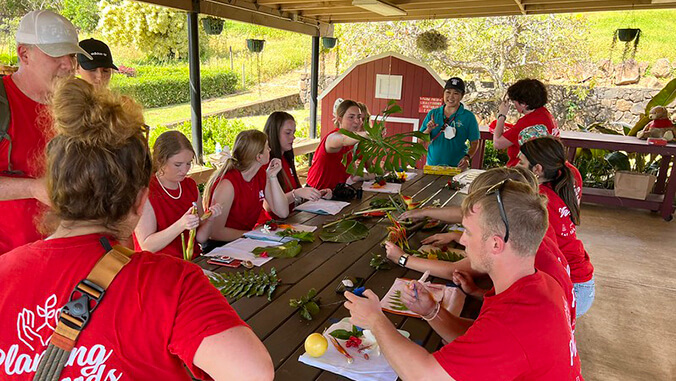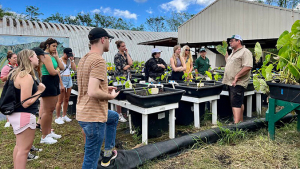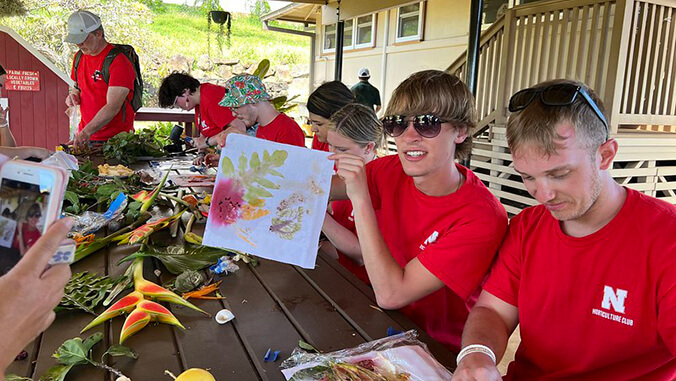
The University of Hawaiʻi at Mānoa College of Tropical Agriculture and Human Resources (CTAHR) helped a midwest university club grow in horticulture knowledge during their five-day spring break trip.
The University of Nebraska-Lincoln’s Horticulture Club journeyed to Hawaiʻi and explored research and horticultural opportunities and insight through CTAHR’s Cooperative Extension. The students toured the Waimānalo Research Station and Urban Garden Center and viewed the aquaponics and aquaculture field trial areas with the Sustainable and Organic Agriculture program. They also learned about minor crop registration issues on coffee with the Cooperative Extension’s IR-4 Minor Crop Registration Program and set up a static hydroponic system developed using CTAHR-generated science.

For a cultural learning experience, the Nebraskan club had the opportunity to visit the GoFarm Hawaiʻi beginner farmer program to learn about food sustainability; they saw native Hawaiian plants and explored cultural preservation with the Master Garden Program, and learned about culturally important crops such as māmaki (typically brewed for tea) and other local flowers and resources that could be used to make plant-based dyes and more with Oʻahu 4-H.
“As a faculty member with an extension appointment, I knew we would be able to see many horticultural opportunities by reaching out to CTAHR Extension,” said Terri James, associate extension educator at the University of Nebraska-Lincoln.
CTAHR’s team made up of Christine Hanakawa, Alberto Ricordi, Jensen Uyeda, Ted Radovich, Tina Lau, Eric Collier, Ken Leonhardt, James Kam, Richard Fisher and Pono Chung lined up horticultural examples in both the urban and research settings.
The students came away with a better understanding of the much different microclimate zones than their own zones, yet sharing similar issues such as a lack of rain on the leeward side of Oʻahu’s mountain range having a rain shadow effect. Nebraskans also have that effect on the western side of their state due to the Rocky Mountain range.
“My main goal with these trips is to have students see that, although they learn horticulture in one location, by understanding the basics, they can apply their knowledge to any geographical location,” James said. “Thank you CTAHR for hosting us. We had a fantastic time. I look forward to our next visit. And, if you are in Nebraska, please let us return the favor.”
Read more at the CTAHR website.


